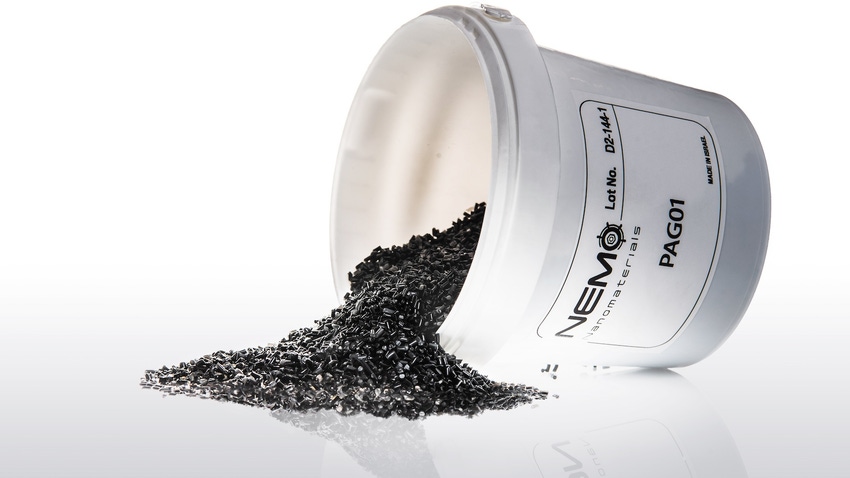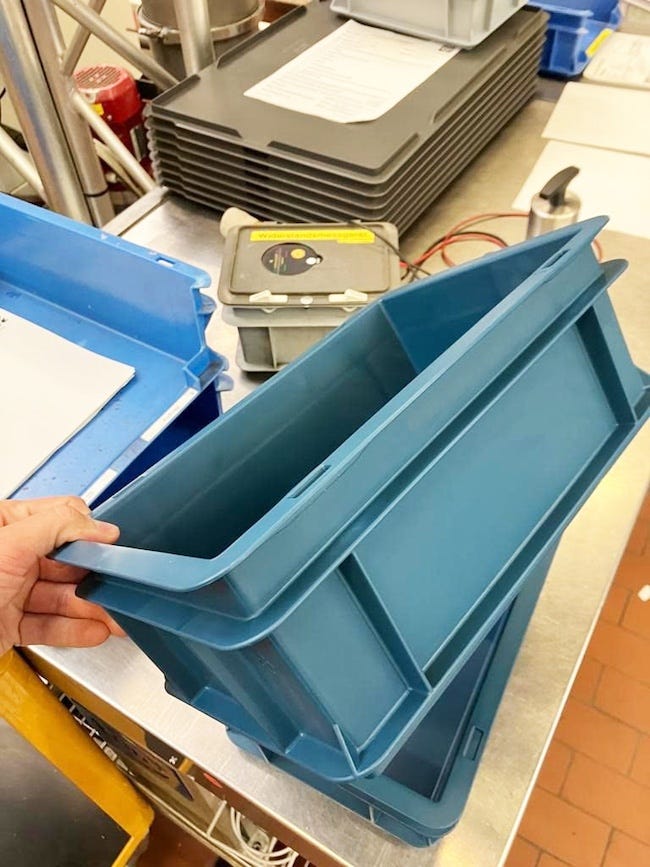Nemo Finds Breakthrough Dispersion Technology to Navigate Nano Challenge
Israeli firm Nemo Nanomaterials is transforming plastics’ ability to electromagnetically shield and electrically conduct with its innovative NemoBLEND masterbatches.
February 28, 2024

At a Glance
- The solution utilizes carbon nanotubes and enables lightweight, sustainable designs
- Single-walled carbon nanotubes can be incorporated into various polymer matrixes
- Potential applications in cables, flexible piping, metal part replacements, crates, sockets, and more
In the ever-evolving landscape of materials science, nanomaterials, particularly carbon nanotubes, have long been heralded as the "next generation" of advanced materials. Their vast potential lies in the capacity to impart exceptional properties to the matrixes in which they are incorporated, particularly in terms of superior electrical conductivity. However, a significant challenge arises in realizing these properties, as nanoparticles tend to exhibit a natural inclination to form agglomerates.
Within this quest for groundbreaking solutions enters Nemo Nanomaterials, a pioneering startup. Specializing in a distinctive compounding method for nanoparticles, the company has perfected a proprietary processing technique for incorporating single-walled carbon nanotubes in polymer matrixes.

NemoBLEND can realize conductive and colorful injection molded parts. Image courtesy of Nemo Nanomaterials.
NemoBLEND masterbatches can seamlessly integrate into any polymeric matrix, imparting plastics with remarkable electrical conductivity properties and electromagnetic shielding capabilities suitable for a range of applications.
Enhanced conductivity and versatility
NemoBLEND masterbatches are currently available in four polymer-carriers — polyethylene (PE), polypropylene (PP), polystyrene (PS), and various polyamides (PAs). Despite the high concentration of carbon tubes loaded into the masterbatch, the final product requires a low dosage — 10 to 30% — a notable advantage over alternative solutions.
With volumetric electrical conductivity ranging from 102 to 109 [Ω·cm] and surface conductivity between 102 and 109 (Ω/sq), these masterbatches find diverse applications in cables, flexible piping, metal part replacements, crates, sockets, and more. Their versatility extends across various industries such as automotive, medical, aviation, electronics, infrastructure, construction, energy, and communication.
Moreover, NemoBLEND masterbatches can be processed using different methods, including injection, extrusion, and thermoforming. A notable advantage lies in the ability to combine the conductive additive with pigments, offering design freedom and the creation of colored products, a unique feature that competitors solely available in black cannot provide. NemoBLEND thereby sets new standards for conductivity and also opens up possibilities for innovative and aesthetically diverse plastic applications.
From lab to life
The impact of NemoBLEND extends beyond the confines of the laboratory, finding practical applications across various industries with remarkable benefits. For instance, the incorporation of Nemo masterbatches in a plastic radar cover designed for electromagnetic shielding at frequencies ranging from 75 to 110 GHz resulted in weight savings of 40% compared to a traditional metal cover.
In the automotive sector, NemoBLEND can play a crucial role in the development of a flexible pipe for transporting flammable liquids. This innovative solution not only boasts excellent mechanical properties but also possesses the unique ability to discharge electrostatic charges, thereby ensuring enhanced safety and an extended lifespan.
Within the cable industry, NemoBLEND's influence is evident in the manufacturing of a plastic tube for cable braids that facilitates data transmission. This design not only provides electromagnetic interference (EMI) shielding but also eliminates the necessity for a previously essential metal layer. The outcome is a simplified tube featuring a reduced cross-sectional area and enhanced flexibility, ultimately streamlining the production process. Additionally, the incorporation of flame-retardant additives adds another layer of versatility to the product, further expanding its potential applications.
Partnering with Kafrit Group
In the industrial production process, Nemo received invaluable assistance from Kafrit Group, known in the plastics industry for its compounding capabilities, additives and masterbatches. Notably, Kafrit has also made a significant investment in Nemo.
"Kafrit's strategic collaboration with Nemo extends far beyond mere financial investment. We provide essential support in marketing and sales, offering financial and regulatory advice within the international plastics landscape, and serving as a crucial manufacturing arm. Our partnership is not just about funding; it's about a deep connection and shared vision for innovation and growth in the dynamic plastics industry," affirms Daniel Singer, CEO of Kafrit Group.
About the Author(s)
You May Also Like




